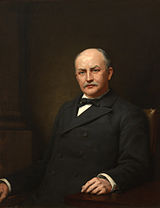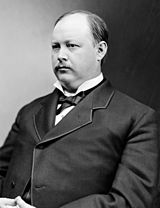U.S. House election, 1892
|
|
|||||||||||||||||||||||||||||||||||||||||||||||
|---|---|---|---|---|---|---|---|---|---|---|---|---|---|---|---|---|---|---|---|---|---|---|---|---|---|---|---|---|---|---|---|---|---|---|---|---|---|---|---|---|---|---|---|---|---|---|---|
|
|||||||||||||||||||||||||||||||||||||||||||||||
|
All 356 seats in the U.S. House of Representatives 179 seats needed for a majority |
|||||||||||||||||||||||||||||||||||||||||||||||
|
|||||||||||||||||||||||||||||||||||||||||||||||
|
|||||||||||||||||||||||||||||||||||||||||||||||
Elections to the United States House of Representatives were held in 1892 for members of the 53rd Congress, taking place at the same time as the election of Grover Cleveland as President for the second, non-continuous, time, defeating incumbent Benjamin Harrison.
In spite of the presidential results, Harrison's Republican Party gained back some of the seats that had been lost in 1890 to the Democratic Party, but was still deep in the minority. The Republican pickups were a result of a number of Republican-friendly Northern districts reverting to form after voting Democratic in the previous election cycle. The third party Populists, who had high support among farmers and laborers in the South and West, also gained two seats.
This was the first election after reapportionment following the 1890 Census. Twenty-four new seats were added, with 13 States gaining one seat each, two States gaining 2 seats each, and one state gaining 3 seats, and the remaining 28 states having no change. Several states did not redistrict following the apportionment of extra seats, and elected those new seats at-large.
The previous election of 1890 saw the election of eight Populists, but no other third party or independent members.
In 1892, three states, with 8 seats among them, held elections early:
One new seat was added in reapportionment. Democrats had a net gain of one seat (taken from a Republican), and Populists gained a seat in the new district.
...
Wikipedia


